 |
49 (5) (1997), pp. 45-47. JOM is a publication of The Minerals, Metals & Materials Society |
|---|
 |
49 (5) (1997), pp. 45-47. JOM is a publication of The Minerals, Metals & Materials Society |
|---|
| CONTENTS |
|---|
The U.S. Army has been using more and more titanium to either increase armor or reduce the weight of current combat vehicles. Future plans call for the development of combat vehicles that are 30 percent lighter. To achieve this target, the future-vehicle hull and turret will have to be manufactured using more ballistically efficient materials than rolled homogeneous steel armor. Low-cost titanium, with its good mechanical, ballistic, and corrosion properties and acceptable fabricability, offers the overall best alternative to achieving this objective.
| Quicktime Clips of Some of the Armored Vehicles Mentioned in This Article | ||
|---|---|---|
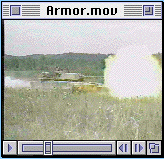 |
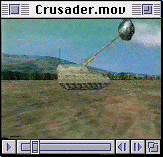 |
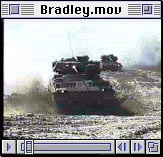 |
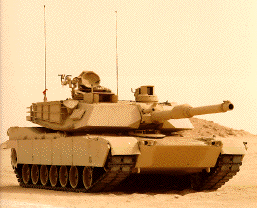
|
Still, the alloys do have disadvantages. Specifically, a spall liner is required, and there are relatively high initial plate and fabrication (machining and welding) costs as compared with RHA.
Although PMCs offer some advantages (e.g., freedom from spalling against chemical threats, a quieter operator environment, and a high mass efficiency against ball and fragment ballistic threats), they have a number of disadvantages. There is a high cost for fabricated components compared with RHA or titanium, and PMCs are not readily fabricated in existing production facilities. Battlefield damage assessment (non-destructive testing) capability is not as well advanced, and multihit ballistic capability and automotive load-bearing capacity may be jeopardized due to structural changes after an initial ballistic strike. In addition, there is a fire and fume hazard to the vehicle interior. Finally, commercial manufacturing and recycling procedures are not fully established. Thus, while titanium alloys and PMCs both offer designers a means to reduce weight, titanium alloys are much more cost effective, and commercial manufacturing procedures are more fully developed.
| Table I. The Increasing Weight of Abrams Main Battle Tank1 | ||
|---|---|---|
| Year | Vehicle | Weight (tonnes) |
| 1980 | M1 | 54.4 |
| 1984 | M1IP | 55.3 |
| 1988 | M1A1 | 58.9 |
| 1990 | M1A2 | 62.1 |
Titanium is routinely fabricated by conventional cutting, welding, and machining operations. Titanium may be readily cut with oxy-fuel cutting methods, and, in fact, cuts faster than steel. After plate cutting, the edges must be prepared for welding; the degree of edge preparation necessary for a good joint is presently being evaluated. Both major U.S. Army vehicle constructors (General Dynamics Land Systems [GDLS] and United Defense Limited Partnership [UDLP]) have undertaken extensive welding development programs. Titanium can be welded using the equipment presently used with minor modifications and additional welder training.
| Table II. Some Properties of Steel, Aluminum, and Titanium Armor | |||
|---|---|---|---|
| RHA MIL-A-12560 |
Aluminum 5083 MIL-A-46026 |
Ti-6Al-4V MIL-A-46077 |
|
| Tensile Strength (MPa) | 1,170 | 350 | 970 |
| Density (g/cm3) | 7.86 | 2.70 | 4.50 |
| Specific Strength* (MPa-cm3/g) | 150 | 130 | 220 |
| Mass Efficiency (Em)** | 1 (by definition) |
1.0-1.2 | 1.5 |
| * Specific strength—tensile strength divided by density. ** Mass Efficiency (Em)—the weight per unit area of RHA required to defeat a given ballistic threat divided by the weight per unit area of the subject material. |
|||
The machinability of titanium is similar to that of austenitic stainless steels. Titanium should be machined at lower speeds and higher feeds than those used for armor steels; however, a better surface finish is easier to achieve. Compared with armor steels, there are no significantly more difficult machining operations for titanium other than drilling and tapping.
| THE TITANIUM MARKET |
|---|
|
Following the break-up of the Soviet Union, demands for aerospace-grade titanium used in the defense and commercial aviation industry decreased considerably in the early 1990s. In addition, the former Soviet Union offered titanium sponge to the world market at drastically reduced prices. These events left the U.S. titanium producers operating at well below capacity, and in fact, in 1992, RMI closed their sponge plant, leaving only two U.S. sponge producers—Timet and Oremet. More recently, the former Soviet Union has increased sponge prices and is now much more interested in exporting more mill products with an increased amount of value added. Additionally, the market for titanium in golf clubs has exploded in the past 18 months or so, and in 1996, amounted to some 4,500 tonnes.3 The use of titanium in other recreational equipment has also been rapidly increasing. The result is that titanium is being thought of more as an engineering material with highly desirable properties at reasonable cost.
There are many approaches to reducing the cost of titanium, all of which are currently being explored.4 Different methods of extracting the metal from ore, greater use of scrap, hearth melting and single hearth melting, and the reduction of surface preparation between ingot and slab and between slab and plate are all being examined. Additionally, relaxing quality-control requirements (e.g., ultrasonic inspection) and fabrication-procedure requirements (e.g., weld joint preparation) can also reduce cost without impairing serviceability for nonaerospace applications. Another potential cost reduction is in alloy formulation. The substitution of the more expensive vanadium with iron in Ti-6A1-4V has resulted in Timet's new alloy Timetal® 62S5,6 Ti-6Al-1.8Fe-0.1Si. Finally, titanium plate is typically produced in specialty-steel rolling mills, and cost reductions can be obtained by an increase in product volume. |
MIL-A-46077 has been Ti-6Al-4V ELI since its inception. Recent work on Ti-6Al-4V with relaxed interstitial requirements (purchased to MIL-T-9046J) has shown that lower-cost material can have the same ballistic properties. Since substitution by titanium can reduce the weight of combat vehicles, there was a need to develop an armor specification that includes low-cost titanium. A revised version of MIL-A-46077 has been drafted by the U.S. Army Research Laboratory (ARL) and should be published within the year. The revised specification now has four classes of armor: a Ti-6Al-4V ELI class (for continuity), two Ti-6Al-4V classes with relaxed interstitial requirements, and an "alternate composition" class. All classes have the same ballistic requirements. Ballistic testing of low-cost titanium by the ARL2 has shown a dependence of resistance to penetration as a function of annealing temperature. It was found that optimum ballistic properties for the alloy tested were achieved with a 900°C anneal.
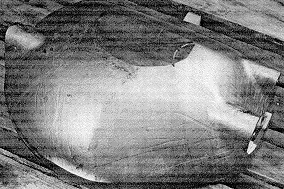
|
| Figure 1. A forged and machined Ti-6Al-4V commander's hatch.6 |
TACOM is also using titanium to up-armor the M1 Abrams main battle tank. TACOM has evaluated a number of components on the M1 that are currently made from RHA for replacement with titanium. In Phase I of the program, two sets of seven components were produced—turret blow-off panels; a nuclear, biological, and chemical countermeasure system cover; a gunners primary sight cover; the engine top deck; a turret-pivot rack; the commander's hatch; and the commander's independent thermal viewer cap (Figure 2). Replacing all of these components results in a weight savings of 420 kg.
In Phase II, the blow-off panels and gunners primary sight cover were selected for upscaling; these have now been contracted to GDLS for manufacturing. The prototype hardware for these two components has been successfully tested and is part of the M1A2 upgrade program that began in October 1996 for a total of 580 vehicles over the next five years. Plans are to include the other components in the upgrade as more data become available on the manufacturing cost. TACOM and GDLS have also begun to look into replacing components made of cast homogeneous steel armor (MIL-A-11356) such as the turret ring with cast titanium.1
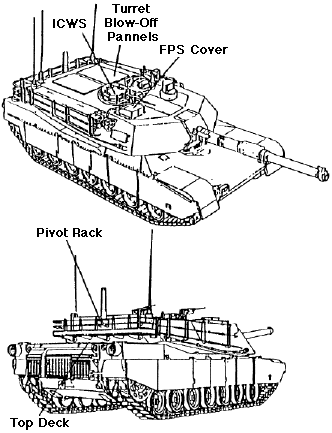
|
| Figure 2. The M1 Abrams main battle tank component replacement. |
There are plans to address other components on the M1 such as torsion bars. High-strength beta titanium alloys exhibit excellent fatigue properties and are good candidates for torsion bar applications. Additionally, TARDEC is investigating a titanium tow bar for the M1 vehicle through the Small Business Innovative Research Program.
Most future vehicles have weight problems. To solve the weight issue, many steel components are being evaluated for substitution with titanium. For example, the U.S. Marines are looking at various options to reduce weight on the advanced amphibious assault vehicle. One of the options is lightweight armor. Another option is to reevaluate steel components such as road arms, support arms, road wheels, and gear housing for substitution with titanium.
There is also potential use of titanium alloys in future artillery systems. Crusader, the future self-propelled 155 mm howitzer, has many areas where titanium can be used. The army is presently evaluating two British designs of towed, 155 mm, lightweight howitzers, both of which employ a considerable quantity of Ti-6Al-4V. Titanium is used primarily in the trails and carriage, but also in the welded recoil units where it must withstand significant hydraulic pressure.
Low-cost titanium has the potential to open up tri-service applications. The U.S. Navy is experiencing seawater pipe deterioration in heat exchangers on board its vessels. About 97 km of 90/10 copper-nickel pipes are replaced annually due to corrosion. Titanium offers better corrosion resistance as well as weight savings. Substitution with titanium will allow the navy to realize enormous maintenance cost savings by extending the service life and reducing refit costs.
The U.S. Air Force has also shown great interest in low-cost titanium. Cost reductions in the aerospace-grade titanium can be effected through the use of the cold-hearth melting process. This process can eliminate the need for double-arc melting. At the same time, rectangular cross-section ingots can be produced, thereby, eliminating the need for the initial thermomechanical steps that are necessary in order to square up the round ingots produced by vacuum arc remelting.
Martin G.H. Wells earned his Ph.D. in physical metallurgy at the Royal School of Mines, Imperial College, London University, in 1961. He is currently a team leader of metallurgy at the Army Research Laboratory. Dr. Wells is also a member of TMS.
Brij Roopchand earned his Ph.D. in metallurgical engineering at the University of Kentucky in 1976. He is currently a materials engineer at the U.S. Army TACOM-TARDEC.
James W. Ogilvy earned his B.A. in engineering at Wayne State University in 1951. He is currently retired from his position as a materials engineer at TARDEC.
For more information, contact J.S. Montgomery, AMSRL-WM-ME, Aberdeen Proving Ground, Maryland 21005-5069; (302) 892-6540; fax (302) 892-6533; e-mail: jmontgom@arl.army.mil.
Direct questions about this or any other JOM page to jom@tms.org.
| Search | TMS Document Center | Subscriptions | Other Hypertext Articles | JOM | TMS OnLine |
|---|